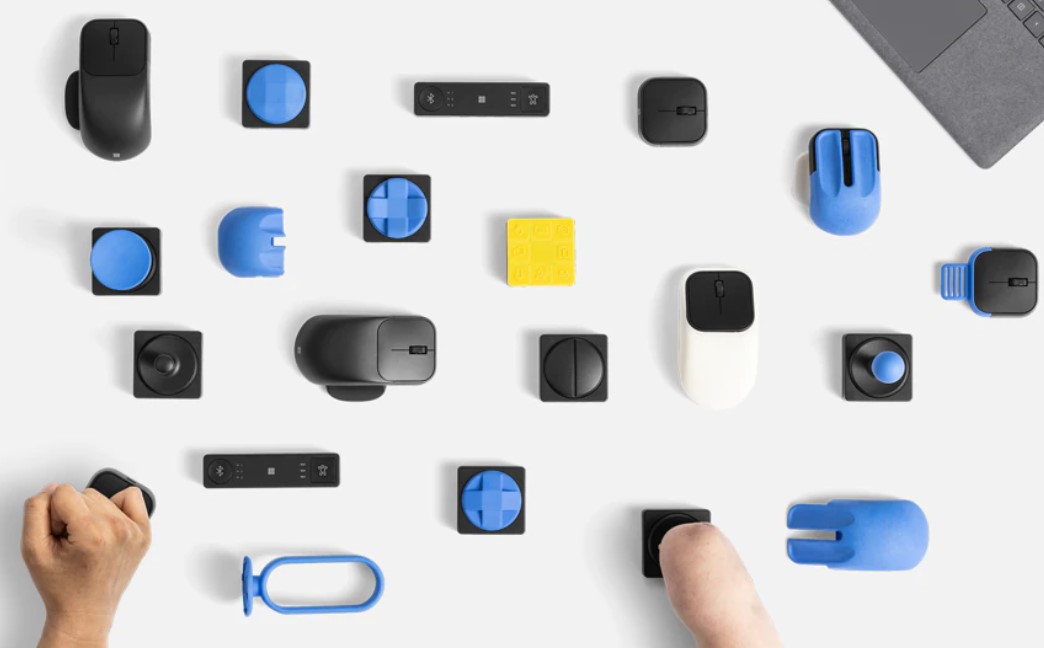Microsoft Adaptive Accessories
Highly adaptable, easy-to-use system that lets you configure, 3D print, and customize your computer input

"Having technology that actually adapts to us is just going to take our productivity up to the next level."
About Microsoft Adaptive Accessories
The Microsoft Adaptive Accessories family is a highly adaptable ecosystem that lets you 3D print and customize your own mouse, keyboard inputs, and shortcuts.
The adaptable mouse is incredibly flexible, allowing differently abled users to personalize it according to their preference – including adaptive mouse tails, thumb support, and 3D printed parts. The mouse is lightweight and portable, ensuring smooth navigation. With a click of a button, users can effortlessly attach or detach mouse tails. It offers wireless connectivity via Bluetooth to up to three devices, or can be connected via USB-C.
The Adaptive Accessories system is designed to replace (and augment) a traditional mouse and keyboard, enabling more people to use a mouse and keyboard free of pain, discomfort, and difficulty.
Video
Journey
The concept behind the Adaptive Mouse was born out of project founder John Helmes’s desire to provide his daughter, Jara, (who suffers from limited mobility and speech) with a mouse that she could customize to her needs.
Beginning as “Project Metis” in the 2020 Microsoft Global Hackathon, the Adaptive Mouse won several awards – including first place in the “Hack for Good” and “Ability Hack” categories – and was quickly slated for further development and productization.
Helmes teamed up with former Microsoft Director of Electrical Engineering Paul Kos to continue propelling the project further. Kos recognized that the idea could help many others gain access to technology by expanding from the mouse to other inputs like buttons and a connectivity hub. Building momentum from their Hackathon wins, the project team connected with The Microsoft Garage for coaching through The Garage Growth Framework, and partnered with fabricator Shapeways for 3D printing.
Finally, they worked closely with the Microsoft Hardware Accessories team to make the ecosystem available to the public, and specifically to more users with accessibility issues like those of his daughter.
Team
Hackathon 2020 core project team:
John Helmes, Paul Kos, Mike Hall, Nicholas Chen, Masaaki Fukumoto, Steve Hodges, Channing Feng, Weishung Liu, James Devine
Press
The Making of Microsoft Adaptive Accessories | by Microsoft Design | Microsoft Design | Medium
How Microsoft makes accessibility a company-wide priority (fastcompany.com)
Microsoft Adaptive Mouse Review | PCMag
Winner of the Hardware innovation category at the GAconf Europe 2022 awards
Finalist in the Disability Smart Inclusive Product Design category at the 2023 Disability Smart Awards
Shapeways 3D Prints Customized Add-ons for @Microsoft Adaptive Accessories – YouTube
Accessible Devices & Products for PC & Gaming | Assistive Tech Accessories – Microsoft Store
Winners of the Independent Living Award – AbilityNet Tech4Good Awards 2023
